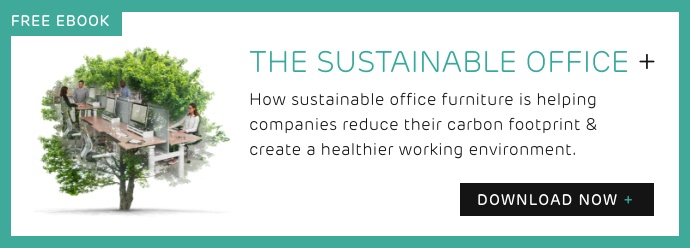Editor’s note: This blog post was originally published in August 2019 and has been revamped and updated for relevance and comprehensiveness.
Designing a ‘green office’ that can be truly part of a circular economy is one of the greatest challenges and opportunities for modern business.
It is an opportunity because it promises a more durable, sustainable and profitable way of being for us all. And it is a challenge because a wasteful mindset is still built into so much of our business thinking and operational process.
But increasingly, a sustainable workplace is becoming more of an essential than a nice to have. Coming out of the pandemic, companies are being defined not just by how they treat their employees and customers, but by their impact on the world.
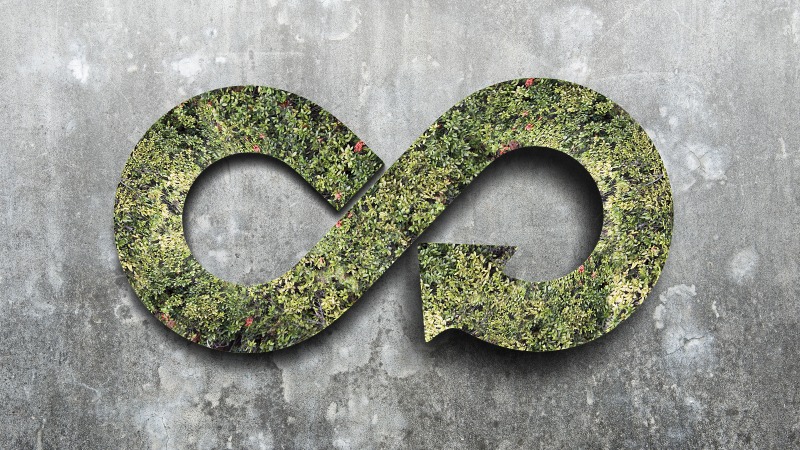
What is the circular economy?
The circular economy is a model of production and consumption that involves redesigning products to be more durable, reusable, repairable and recyclable, so they can be kept in circulation for as long as possible.
Campaigners remind us that in spite of recent shifts in environmental awareness, businesses are still wasteful. Wasteful of energy, resources, materials, creativity and people.
When something is no longer needed we simply dump it and replace it. It’s an old business mindset that sees waste as an unavoidable byproduct of our operations and seeks to remove and forget about it as quickly as possible.
This old mindset creatively designs for obsolescence to stimulate future demand, without regard for the waste that wholesale replacement will generate.
In contrast, the mindset of the circular economy sees waste as a potential source of energy and replenishment. It, therefore, seeks to harness it and use it as future capital.
As the Ellen MacArthur Foundation puts it:
“In our current economy, we take materials from the Earth, make products from them, and eventually throw them away as waste – the process is linear. In a circular economy, by contrast, we stop waste being produced in the first place.”
How circularity adds value
1. Designing to reuse, recycle and restore
All the choices you make within an office - from the way you handle your everyday recycling to your selection of an energy supplier impacts upon your ability to reduce your environmental impact.
But what about the furniture you use? Where is it sourced from and what happens to it at the end of its life?
In the circular economy office furniture should be built for easy disassembly, allowing pieces to be separated easily and quickly for replacement or recycling.
For example, the Think chair by Steelcase is easy to disassemble and plastic parts are clearly labelled for effective recycling. The Kirn chair by Orangebox has also been designed for disassembly, and 98% of the chair can be recycled.
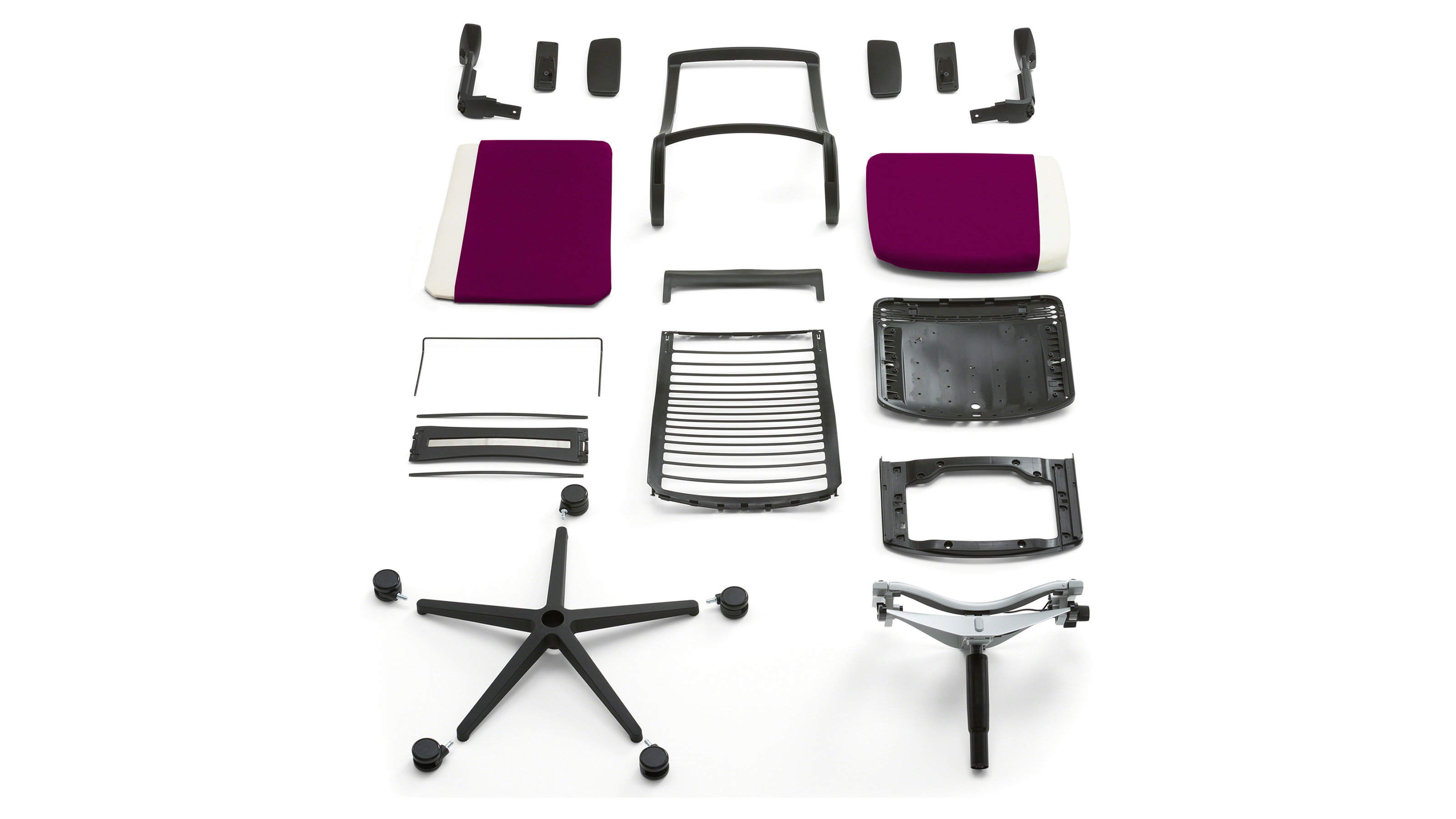
End of use programmes where furniture is bought back or otherwise re-introduced into the supply chain, e.g. through remanufacturing, can help businesses dispose of their surplus office furniture in socially, economically and environmentally responsible ways.
Over the last 18 months, IE have brought back and resold over 16,000 desks, chairs and other office furniture, diverting over 250 tons from landfill and delivering a total saving of 850 tons of CO2. That’s equivalent to 7.2 million litres of petrol.
Sourcing sustainability
In a circular economy, waste is used in new and innovative ways. This means not just using wood from forests that are replanted, but not using ‘virgin’ wood at all. Not just using plastics that can be recycled, but extracting plastics already in the environment and using them.
For example, Steelcase have pioneered sustainable design and build practices including building products with 'planked-veneer', (oak and walnut pieces leftover from other processes) that cannot be used in other products.
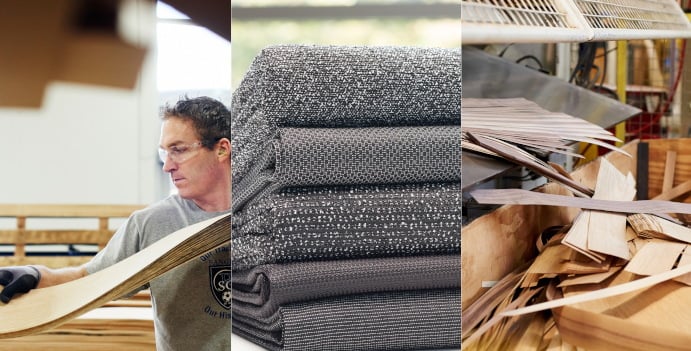
Today, this previously unusable wood is being turned into sustainable, one-of-a-kind furniture that is showcasing its organic materiality - the knots, visible grain and colour variations that reminds us of its origins and the sustainability agenda itself. And in doing so, they’ve saved $1 million and over 400 trees.
Similarly, their Ocean to Office initiative, sees them using plastics dumped in the sea to weave new, durable and aesthetically unique materials for use in acoustic screening.
Circular buildings?
Even buildings themselves can be part of this kind of circular thinking - the creative reuse of abandoned spaces can build dynamic spaces where businesses can mingle and inspire each other. In Rotterdam a derelict Center Parcs holiday resort has become the exemplar of just this kind of initiative.
Above ground, (within an old night club building) are a mix of offices for consultancies, architects and others, an ecosystem of ‘circular’ entrepreneurs - while in the concrete bowels of the swimming pool building mushrooms are grown, leathers tanned and waste recycled.
In another example of innovative Dutch design, the Alliander office in Duiven is made up of 83% recycled materials. The wood came from a waste processing company, the scrap concrete from the old building, lamps from old transformers, and the insulation made from old uniforms. And by using solar panels, it is carbon neutral.
2. Harnessing tech to change the way you use space
Technology can be deployed to ensure we are all using our workspaces in smarter and more environmentally sensitive ways. For example, Steelcase’s workplace advisor can be used to monitor, quantify and optimise ongoing workplace performance.
It can see how what spaces are used when, calculating how they can be used most efficiently and by extension how their consumption of power, light and heat might be managed to reduce costs and minimise their carbon footprint. It can help us make long term decisions about what we really need from our workspaces and how they can be responsibly optimised for commercial and environmental impact.
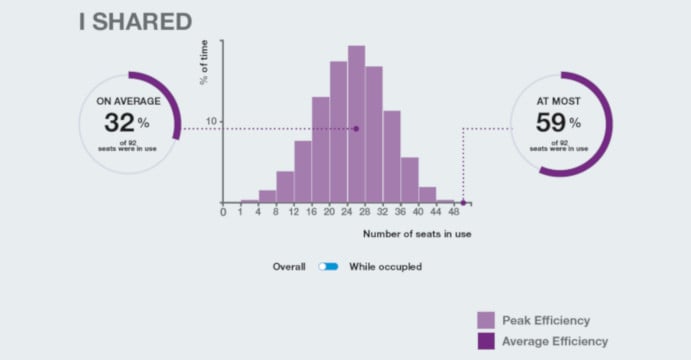
3. Supporting hybrid working
Gone are the days when most people spend five days a week constrained to their workplace. The rise in people shifting to hybrid work rather than returning full time to the workplace isn't only good for wellbeing, but for the green office too.
With people spending part of the week at home, it helps limit the amount of traffic and pollution generated by people’s daily commutes. Many organisations are also focused on reducing their workplace or office footprint to achieve net zero - and a hybrid work model is making this possible.
4. Improving employee wellbeing
Making sustainable choices benefits your people too. It can enhance their experience, boost productivity and improve the quality of their lives, all while reducing the demand on the environment.
It’s no real surprise that buildings and products that are bad for the environment, are usually bad for us as humans too. Want to find out what impact your office furniture has on the environment and people too? Take a look at this blog post.
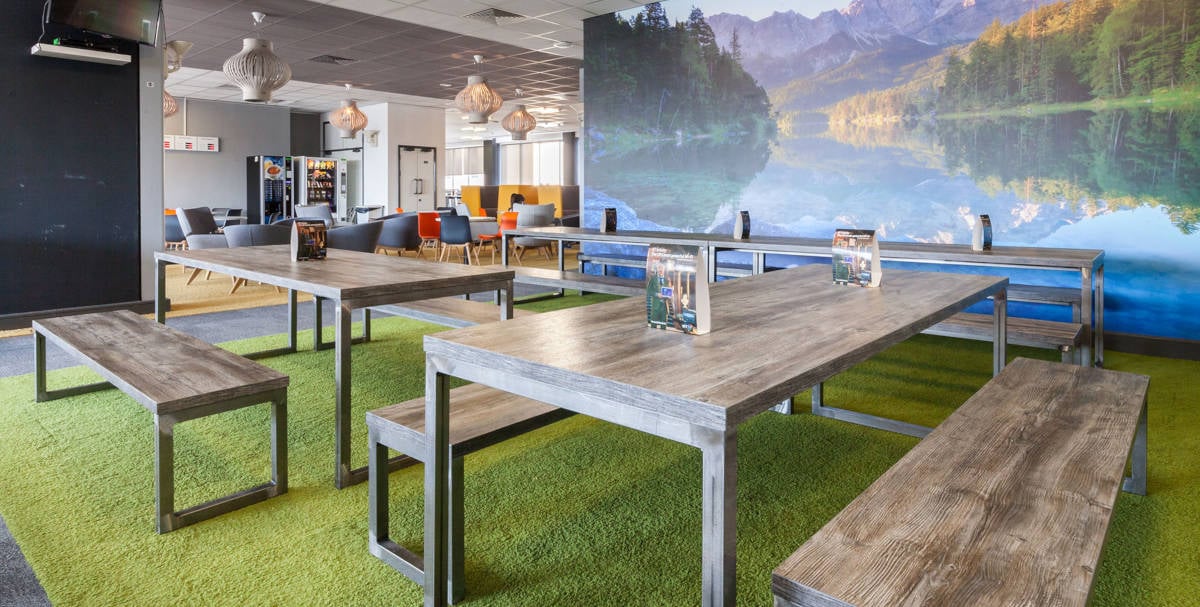
5. Attracting and retaining talent
To attract and retain the best talent, businesses need to get serious about sustainability.
Workers today care about environmental issues and want to work for companies that share their values. And it’s not just the younger generations, inspired by Gen Z poster girl Greta Thunberg. It seems that regardless of age, there’s a commitment to environmental goals across the workforce.
In the Future of the Workforce report published by Unily in 2020:
- 65% of workers said they were more likely to work for a company with a strong environmental policy
Yet, it’s still the younger generations who are leading the pack in their commitment to the cause:
- 64% of millennials said they definitely wouldn’t take a job at a company that wasn’t socially responsible
- 75% said that they’d take a smaller salary to work at a company with environmentally responsible policies
Businesses will simply not survive if their practices do not meet these new expectations.
Why should your business care?
Running a 'green office' will be increasingly necessary in a world of dwindling, finite natural resources.
But it is also an opportunity to make your business more agile, durable and, ultimately, more profitable through a deep seated change in mindset.
There is a whole new generation for whom waste is simply an anathema; a generation who are intent on realising the full benefit of sustainability as a cultural, creative and value driven endeavour.
It is this demographic who will be increasingly, and inexorably, demanding wholesale change in the way businesses are designed and organised. And if businesses can harness their energy and creativity - then the possibilities are endless.





